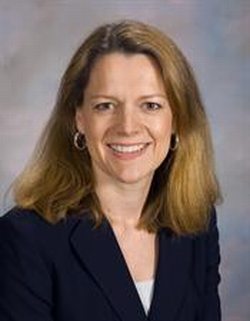Smoke-exposed Children with Flu More Likely to Need ICU Care
Smoke-exposed Children with Flu More Likely to Need ICU Care
Exposed children with flu also stay in the hospital longer
Children who are exposed to secondhand smoke are more likely to need intensive care and intubation when hospitalized with influenza, according to new research by the University of Rochester Medical Center presented today at the Pediatric Academic Society meeting in Denver. The children also had longer hospital stays.

“We know secondhand smoke contributes to chronic illnesses like asthma, but we haven’t quantified the extent of what it can do to children with the flu,” said Karen Wilson, M.D., M.P.H., assistant professor of Pediatrics at URMC and author of the abstract, which was funded by the Julius B. Richmond Center of Excellence. “This study indicatesthat secondhand smoke makes the condition much more severe in children hospitalized with the flu.”
Researchers analyzed the medical charts for 91 children hospitalized for flu at Golisano Children’s Hospital at URMC between 2002 and 2009. More than a third of the children were exposed to secondhand smoke. Researchers found that exposed children were more likely to need intensive care (31 percent versus 9 percent) and intubation to help with breathing (19 percent versus 2 percent). After controlling for underlying conditions, including asthma, researchers found that exposed children were almost five times more likely to need intensive care and more than 11 times more likely to need intubation.
The children’s length of stay in the hospital was significantly associated with smoke exposure and chronic conditions. For children with no chronic conditions, exposure lengthened their stay from two to three days. For children with chronic conditions, exposure lengthened their stay from four days to more than 10. Wilson said these results indicate a larger burden on hospitals – and on the families of these children.
“Parents need to be supported in their efforts to protect their children from tobacco smoke. The only way to protect them completely is for parents and close contacts to quit smoking completely,” Wilson said and suggested that New York residents interested in quitting can call the New York State Quitline at 1-866-NY-QUITS, or go to www.nysmokefree.com for help. “The next best thing is to have a no no-smoking rule in homes and cars. Finally, while we recommend flu shots for all children now, it’s especially important for children exposed to smoke to get their flu vaccine every year.”
Karen M. Wilson, M.D., M.P.H. Bio.
University of Rochester
School of Medicine and Dentistry
601 Elmwood Ave., Box 777
Rochester, NY 14642

> Research Bio
My current research portfolio is focused around the translational study of the impact of second-hand tobacco smoke on the health of children. This includes the biochemical effects SHS has on the pulmonary and cardiovascular systems, as well as its impact on outcomes for children hosptialized for respiratory illness. I am also interested in improving the delivery of tobacco cessation and exposure reduction counseling for families, especially of hospitalized children.
> Awards & Honors
The Dean’s Award 2004
Robert J. Haggerty Prize in Pediatrics 2004
Alpha Omega Alpha 2003
Speaker, White Coat Ceremony 2003
Gilbert B. Forbes Prize in Pediatrics 2001
Cum Laude | St. Lawrence University 1990
Psi Chi | National Psychology Honorary 1990
> Education
MD | Medicine | University of Rochester School of Medicine & Dentistry 2004
MPH | Public Health | University of Rochester School of Medicine & Dentistry 1995
BS | Psychology | St. Lawrence University 1990
> Specialties
Pediatrics – American Board of Pediatrics
> Post-Doctoral Training & Residency
Residency in Pediatrics at Golisano Children’s Hospital at Strong Memorial 07/01/2005 – 06/30/2007
Internship in Pediatrics at Golisano Children’s Hospital at Strong Memorial 07/01/2004 – 06/30/2005
> Current Appointments
Assistant Professor – Department of Pediatrics, General Pediatrics (SMD) – Primary
Assistant Professor – Department of Emergency Medicine (SMD)
Assistant Professor – Center for Community Health
* The above story is adapted from materials provided by University of Rochester Medical Center




















